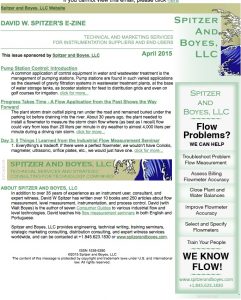
The purpose of installing a level measurement system is to measure level accurately in a reliable manner. Whereas issues dealing with physical properties
, process parameters, electronic features, and interconnections are often considered extensively, the quantification of the expected measurement quality of the installed level measurement system can be virtually neglected. Often, relatively little emphasis is given as to how well the level measurement system will perform its intended purpose. Adding to the confusion are the differences in the manner in which performance is expressed and the incomplete nature of the available information. Nonetheless, the quality of level measurement should be a prime concern.
The performance of a level measurement system is quantified by means of its accuracy statements. The reader must understand not only which parameter is being described, but also the manner in which the statement is expressed. In level measurement, parameters are commonly described in terms of a:
• absolute (fixed) distance error
• percentage of the empty distance (farthest measurement in span)
• percentage of the maximum sensor distance
• percentage of measured distance
• percentage of set span
• percentage of maximum span
An absolute (fixed) distance error statement describes an error that is constant. This error is independent of the calibration range and the actual level in the vessel. For example, the stated accuracy of a level measurement system in a 1000 mm high vessel (100% level located 100 mm below the sensor) might be ±10 mm. The absolute error at different levels is:
Level Distance Absolute Error (10mm)
0% (empty) 1100mm 10mm
25% 850mm 10mm
50% 600mm 10mm
75% 350mm 10mm
100% (full) 100mm 10mm
A percentage of empty distance statement describes a parameter that is in error by a constant percentage of the farthest measurement distance in the span. In the measurement of 100-1100 mm high vessel (100% level located 100 mm below the sensor) measured with an accuracy of 1 percent of empty distance, the empty distance is 1100 mm, so the absolute error can be calculated as:
Level Absolute Error (1% of empty distance)
0% (empty) 1% of 1100 = 11mm
25% 1% of 1100 = 11mm
50% 1% of 1100 = 11mm
75% 1% of 1100 = 11mm
100% (full) 1% of 1100 = 11mm
The percentage of maximum sensor distance statement is similar to an absolute (fixed) distance error statement in that its absolute error is constant. However, the error is related to the maximum distance that can be measured by the sensor. For example, the stated accuracy of a level measurement system in a 1000 mm high vessel (100% level located 100 mm below the sensor) might be ±1 percent of maximum sensor distance of 6000 mm. The absolute error at different levels is:
Level Absolute Error (1% of maximum sensor distance)
0% (empty) 1% of 6000 = 60mm
25% 1% of 6000 = 60mm
50% 1% of 6000 = 60mm
75% 1% of 6000 = 60mm
100% (full) 1% of 6000 = 60mm
Note the significant variation in absolute errors associated with the different error statements above.
The remaining performance statements will be described in Part 2.
This article was excerpted from “The Consumer Guide to Non-Contact Level Gauges”
